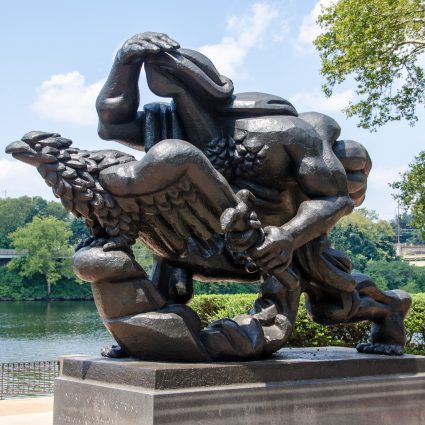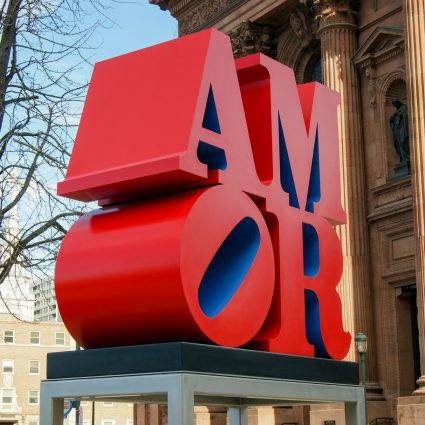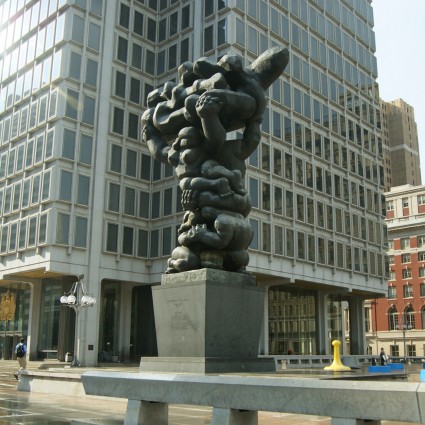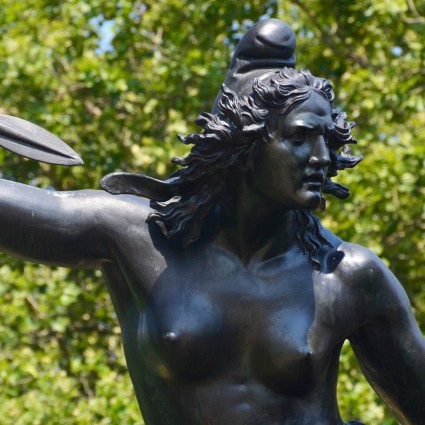At A Glance
In 1952, virtually all of Lipchitz’s work in progress was destroyed when his studio went up in flames
By chance, the plaster of Lipchitz’s 1943 Prometheus was in Philadelphia for an exhibition at the Pennsylvania Academy of Fine Arts, and was not damaged
The Philadelphia Museum of Art purchased the plaster sculpture and arranged for Lipchitz to supervise its casting in bronze
The sculpture symbolizes the ongoing struggle between good and evil, humanity and intolerance
Moved by a sense of pity and justice, the Titan Prometheus stole fire from the gods and made a gift of it to the first humans. For this transgression, Zeus had him chained to a high rock in the Caucasus, where a giant bird of prey pecked at his vitals. He remained imprisoned there for eons until freed at last by Hercules. So runs a familiar version of the Greek myth. In Jacques Lipchitz’s version, however, Prometheus literally takes matters into his own hands. The massive bronze presents the Titan broken free of his chains, strangling the bird that has tormented him. The sculpture is directly symbolic, expressing the ongoing struggle between good and evil, humanity and intolerance.
At that time the purchase represented the museum’s largest payment for work by a living sculptor.
At the outbreak of World War II in 1939, Lipchitz, a Lithuanian Jew who had emigrated to France, fled Paris with his wife; two years later they arrived in New York, where the sculptor soon rebuilt his career. When the Brazilian government requested a sculpture for a large exterior wall of a new building in Rio de Janeiro, he turned to the Prometheus theme, which he had explored earlier in Paris. Completing a plaster version in 1943, he enlarged it to a 7-foot maquette with the understanding that it would be magnified three times further before casting. The Brazilian government, however, chose to cast the sculpture in its smaller form, and the artist thereupon disowned the work.
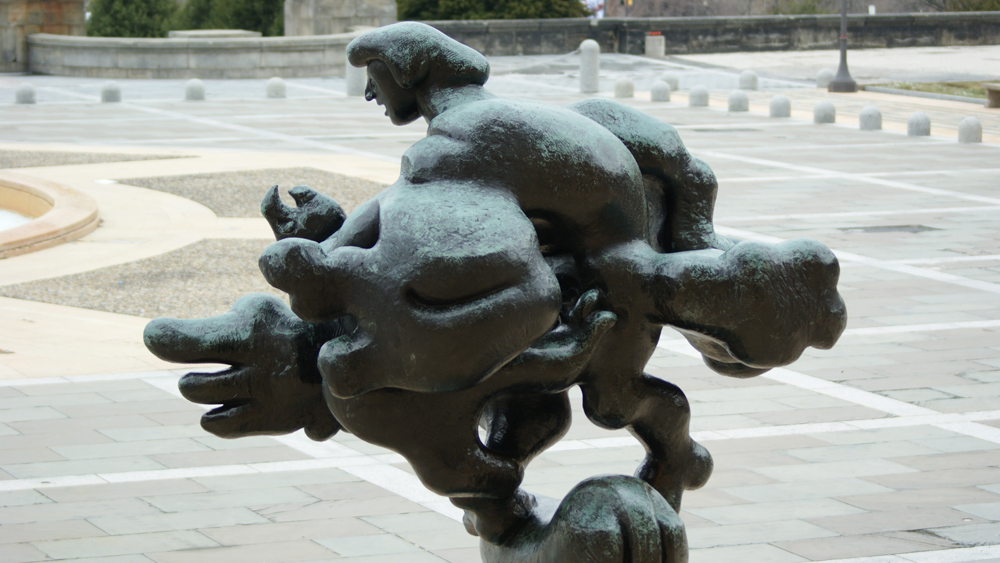
As if he had not endured enough struggle, Lipchitz saw his New York studio go up in flames in 1952. Virtually all of his work in progress was destroyed. By chance, the plaster of the 1943 Prometheus was in Philadelphia at the time, where it won the George D. Widener Gold Medal in an exhibition at the Pennsylvania Academy of the Fine Arts. Quickly the Philadelphia Museum of Art purchased the plaster sculpture and arranged for Lipchitz to supervise its casting in bronze. At that time the purchase represented the museum’s largest payment for work by a living sculptor. Now Lipchitz’s Prometheus, with its intense one-eyed stare, continues the eternal battle on the museum steps. Lipchitz also created two other major public works for Philadelphia: The Spirit of Enterprise and Government of the People.
Adapted from Public Art in Philadelphia by Penny Balkin Bach (Temple University Press, Philadelphia, 1992).
RESOURCES
This artwork is part of the Around the Philadelphia Museum of Art tour
